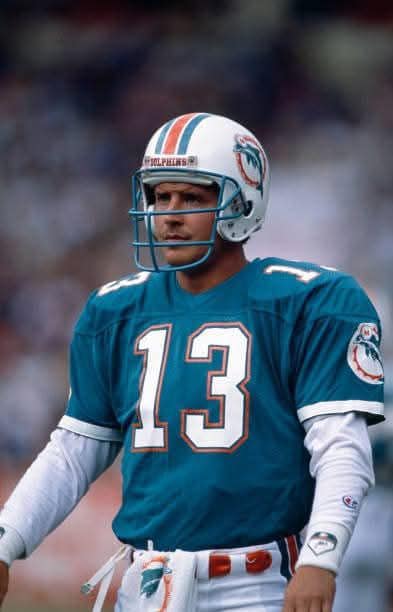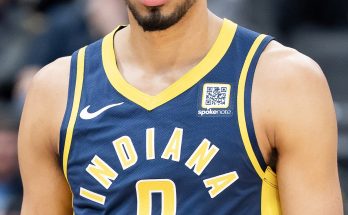Michael Vick: Poetry in Motion on the Gridiron
In the world of football, few players have redefined a position the way Michael Vick did. His unique combination of athleticism, arm strength, and vision made him a living spectacle every time he stepped on the field. Watching Vick play was like witnessing a finely crafted work of art unfold before your eyes, a blend of speed, agility, and raw power that made him a must-watch player every Sunday. He wasn’t just playing football; he was performing an intricate dance, weaving through defenders, with every movement exuding a sense of fluidity and grace—poetry in motion.
For many fans, Michael Vick transcended the game. His playstyle was something different. He was a quarterback, but he wasn’t bound by the typical limitations of the position. Vick’s ability to throw the ball 50 yards on a dime was awe-inspiring, but it was his speed and elusiveness that made him legendary. Defenses, regardless of how prepared they were, were often left chasing shadows, unable to predict what he would do next.
Vick’s legacy isn’t just in the highlights—though there are many of those—it’s in how he reshaped the quarterback position. His blend of passing and rushing set the stage for the future of dual-threat quarterbacks. But beyond that, Vick’s influence went much deeper, as he represented a new era of athleticism and possibility in the NFL.
The Rise of Michael Vick
Michael Vick’s rise to prominence began long before he was the number one pick in the 2001 NFL Draft. Growing up in Newport News, Virginia, Vick was always a standout athlete. From a young age, his natural athleticism was clear. He was the kind of player that made every game feel different—whether it was football, basketball, or another sport, Vick was always the most electrifying player on the field.
His high school days were a prelude to the greatness that was to come. He played at Warwick High School, where he quickly became a sensation. The records he set and the way he dominated defenses only hinted at what he was capable of at the next level. By the time he made the leap to Virginia Tech, Vick had developed into one of the most exciting young quarterbacks in the country.
At Virginia Tech, Vick’s game flourished. Under head coach Frank Beamer, Vick showcased a level of athleticism and skill that had not been seen at the quarterback position before. His cannon of an arm, paired with his ability to make defenders miss in the open field, made him nearly impossible to stop. By the time he left for the NFL, Vick was a household name, and it was clear that he was something special.
The 2001 NFL Draft: A New Era Begins
When the 2001 NFL Draft rolled around, it was a no-brainer for the Atlanta Falcons to select Michael Vick with the first overall pick. The Falcons had struggled for years to find a franchise quarterback, but they had their answer in Vick.
Vick’s arrival in the NFL was a watershed moment for the league. While quarterbacks like Peyton Manning and Tom Brady were excelling with more traditional, pocket-passing styles, Vick represented something different. He was a game-changer, someone who could threaten defenses in ways that few quarterbacks had ever done before. His skill set was unlike anything the NFL had seen. Vick didn’t just sit in the pocket and survey the field; he had the rare ability to break containment, improvise on the fly, and make plays with his legs. This was a new breed of quarterback, and Vick was leading the charge.
In his rookie year, Vick immediately showed flashes of brilliance. His electric style of play was on full display as he led the Falcons to the playoffs in just his second season. The NFL had never seen anything like it. For the first time in a long while, defenses didn’t know what to expect. They were prepared for the standard quarterback drop-back pass, but Vick could drop back and then break the pocket, turning a simple play into something spectacular.
Poetry in Motion: The Phenomenal Playmaking Ability
When you think about Michael Vick’s career, it’s impossible not to focus on his ability to make plays with his legs. As a passer, he was impressive—his arm strength was unmatched, and his deep ball was one of the most beautiful things in football. But it was his athleticism and speed that set him apart from the rest. Vick was an incredible dual-threat, capable of turning any broken play into a massive gain.
His quickness, combined with his ability to read defenses, made him one of the most dangerous quarterbacks of all time. When Vick took off running, it was as if the field opened up for him. He could juke defenders, outrun linebackers, and leave defensive backs in his dust. He was like a lightning bolt, zipping past everyone in his path.
One of the most iconic moments of his career came during a 2004 game against the Minnesota Vikings. Vick, known for his blistering speed, ran for an 18-yard touchdown, evading several would-be tacklers along the way. The play was a perfect example of his style: a quarterback who could throw the ball with precision, but who could also take over a game with his legs. Watching Vick run was like watching a masterpiece unfold.
The 2004 Season: Peak Michael Vick
The 2004 season was the pinnacle of Michael Vick’s career. It was the year when he fully embraced his role as both a passer and a runner. Vick led the Atlanta Falcons to a 11-5 record and their first playoff appearance with him at quarterback. He was named to the Pro Bowl that year, a testament to his incredible talent and ability to change the game in a way that few quarterbacks had ever done.
That season, Vick threw for 2,313 yards, 14 touchdowns, and 12 interceptions. While his passing stats weren’t among the league leaders, it was his rushing numbers that truly set him apart. Vick rushed for 902 yards and 3 touchdowns, breaking multiple records for a quarterback. His performance that season left no doubt that he was the most electrifying player in the league.
What made Vick’s 2004 season even more impressive was his ability to lead the Falcons in high-pressure moments. When the team needed him most, Vick was there to deliver. Whether it was with his arm or his legs, he could find a way to win games, and his electrifying style kept opposing defenses on their heels.
The Changing of the Guard
Vick’s legacy in the NFL isn’t just about what he accomplished on the field; it’s about how he changed the game. His success helped pave the way for a new era of quarterbacks—one where athleticism and versatility became just as important as passing accuracy and decision-making.
Quarterbacks like Russell Wilson, Cam Newton, and Lamar Jackson all owe a debt to Vick. His success proved that a quarterback didn’t have to fit the traditional mold. A quarterback could be mobile, could run, could make plays with their legs, and still excel. Vick’s influence is seen in every dual-threat quarterback in the league today.
The Setbacks and Comeback
Vick’s career was far from a smooth ride, and his personal life became the subject of intense media scrutiny. In 2007, Vick was convicted of running a dog-fighting ring, a mistake that would cost him not only his reputation but his place in the NFL. He was sentenced to 23 months in federal prison, and his career appeared to be over.
However, Vick’s story is also one of redemption. After serving his time, he was given a second chance by the Philadelphia Eagles in 2009. In his return, Vick showed flashes of his former brilliance, especially in 2010 when he led the Eagles to the playoffs and was named the NFL Comeback Player of the Year. Vick’s resilience, determination, and ability to overcome adversity was another layer of his legacy—he didn’t just break down defenses; he broke through his own personal struggles to return to the top.
Legacy: More Than Just a Quarterback
Michael Vick’s impact on the NFL is undeniable. He wasn’t just a quarterback; he was a force of nature, a player who changed the way the position was viewed. His legacy isn’t just in the records he set, the games he won, or the highlights he provided—though all of those are significant. Vick’s real legacy is in how he altered the course of football.
His electrifying playmaking ability redefined what a quarterback could do. He proved that a quarterback didn’t have to be a stationary pocket passer; they could be dynamic, mobile, and just as dangerous with their legs as with their arm. Vick showed that the position could evolve, and in doing so, he opened the door for future generations of dual-threat quarterbacks.
For many fans, Michael Vick was more than just a football player—he was a symbol of possibility. He was the player who showed that anything was possible, that athleticism and talent could combine to create something extraordinary. Watching Vick play was like watching a piece of art come to life. It was poetry in motion, and it was unforgettable.



